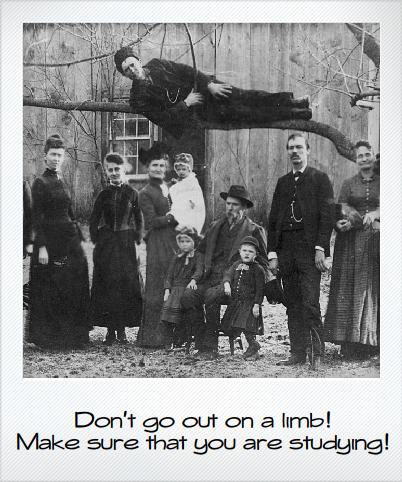Monthly Archives: October 2009
Clive Owen talks about Children of Men
Here is an extract. Read the rest here.
The Single Take Process of Children of Men:
Owen’s recently been a part of a couple of films involving special technical processes, and the actor says he’s always aware of what’s going on behind the camera while he’s performing. “It’s one of the elements of making movies that I actually really enjoy. I love the collaboration of doing shots like those in Children of Men because there’s something about filmmaking that, you know, if it was just about putting great directors, great scripts, and great actors together and you’re guaranteed a great film, that’s one thing, but that isn’t the case. There aren’t any rules. There’s something sort of elusive that’s out of any individual’s control that makes a film work or not work, and when you’re doing one of those hugely ambitious long sequences of one shot, it’s a genuine collaboration. It’s everybody pulling together to try and make something happen. The responsibility is a collective one.
The strongest memory from the movie was how much, how closely I had to work with the [camera] operator on those sequences. We would rehearse for a very, very long time and it was very painstaking and specific. But then when we come to shoot it, it has to feel like we’re catching it on the run. You’ve got to feel like you’re in the thick of it and it’s all about pacing. If you hold a beat a bit too long, it will suddenly feel a bit manipulative. Like, ‘He’s held there so we see the tank just over his right shoulder.’ We work very, very specifically about what we want to see and what we want to catch. Then when we go for it, we’ve got to shape that up and keep an energy that is much looser than that.
They’re very adrenalized, those sequences, because there’s huge resets. It’s like some of those big ones are four, five-hour resets to try and go again for a take like that. So everybody is very adrenalized, gearing up to go in for one of those takes, and there’s something just a bit magical. I think that technically some of this film is pretty staggering. The operator…most of the film is hand-held and the operator did a really incredible job, I think.”
Calculus Fail
Children of Men and a Plural Messianism

Children of Men (2006) presents an apocalyptic narrative in which the hope for redemption relies on the formation and expansion of new communities. Director Alfonso Cuarón invents a realistic, modern Armageddon by playing on contemporary fears about environmental destruction, nuclear warfare, terrorist attack, and the sense of cultural loss that accompanies rapid globalization. The film relies on Christian theological symbols to propose a new kind of messianism – one in which many messiahs will collectively restore human sacrality and fertility by dismantling rigid systems of social control. By envisioning the apocalyptic world as one that dehumanizes outsiders, Children of Men is able to merge religious messianic motifs with a cultural critique of political borders and ideologies of exclusion.
Read the article here.
Real Room 101 – Part 3
An analysis of setting in Brave New World, Gattaca and The Handmaid’s Tale

For those who want to read about the setting of Brave New World try Helium. The article below is ranked number 5 by its members. Links to articles ranked 1-4 can also be found there.
In Utilitarianism, John Stuart Mill writes that “it is better to be a human being dissatisfied than a pig satisfied.” By this he meant there are qualitative degrees of satisfaction and if to be satisfied we’re lowered in status to that of a pig, it’s better for us to be dissatisfied humans. The film Gattaca and the books Brave New World and The Handmaid’s Tale create fictional places where the needs and desires of humans are met, but not as well as they should be and not without a price. Given the achievements in science over the last several decades, specifically in areas of genetics and biology, it is no wonder why we dream of altering our world in the name of progress. But with social progress in these tales comes repressed individuality, loss of personal freedom, and discrimination of those who aren’t the biological elite. Because such stories deal with these potential imperfections of utopia, they’re called dystopias, pessimistic visions of societies striving to be ideal but never reaching their goal.
Read the rest here.
Yummy

How to write badly well

Have a look at this blog ‘How to write badly well’ for some light relief. For instance:
Use as many adjectives as you can
He slowly walked the slow, winding path towards the crooked, run-down old house. With one slow, hesitant hand he bravely, resolutely knocked on the dusty, pock-marked, ancient and frightening door. Slowly, it opened slowly. He slowly poked his brave head through the narrow, foreboding gap.
‘Hello?’ he slowly said, bravely.
Just then, suddenly (yet strangely slowly), a terrifying, scary, bone-chilling, face-tingling, stupefyingly mortifying and stultifying, yet oddly inconsequential and subtly fragrant, big, massive, enormous multi-hued, monochrome monstrosity of epic, legendary, massive, indescribable proportions burst thunderingly from the shadowy, ill-defined, hazy, portentous, generically appropriate yet obviously underdeveloped and self-evidently over-described dark, dark darkness.
‘RAAAAAAH!’ it said.
Or
Always use a thesaurus
She manipulated the garment in a cogitative mode.
‘Hmm,’ she vocalised. ‘This attire is verifiably marvellous. What is it constituted from?’
‘From the most meritorious velveteen,’ defined her interlocutor, simpering coincidentally.
‘Is it?’ iterated the party of the first part. ‘That’s felicitous.’
‘Additionally, this specified object has the property of being subdivided in terms of its defining mercantile characteristic, and can be taken possession of for the diminutive quantity of merely a half-dozen currency units,’ the retail employee informed.
‘Exoneration?’ supplicated the protagonist appropriately. The commercial tertiary sector worker eyeballed her perspicaciously.
‘I said it’s five ninety-nine. Do you want it or not?’
Sadly, I have read very similar pieces for realsies 😦
20 days left


